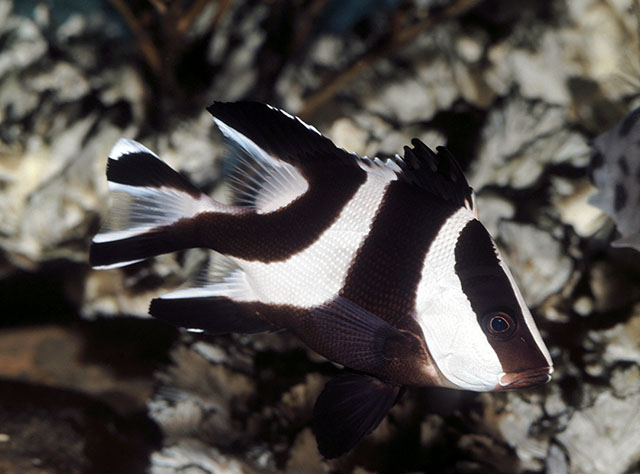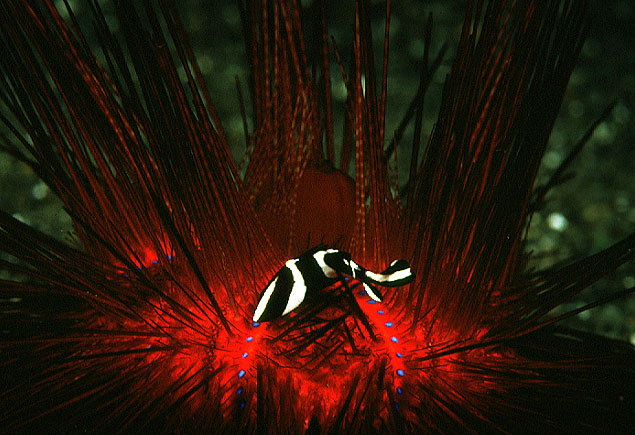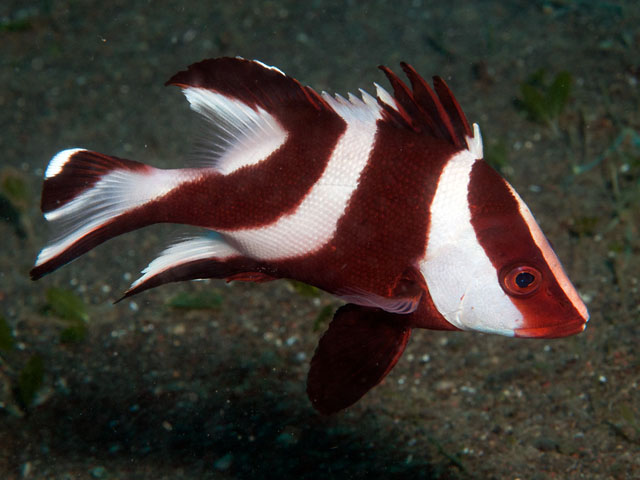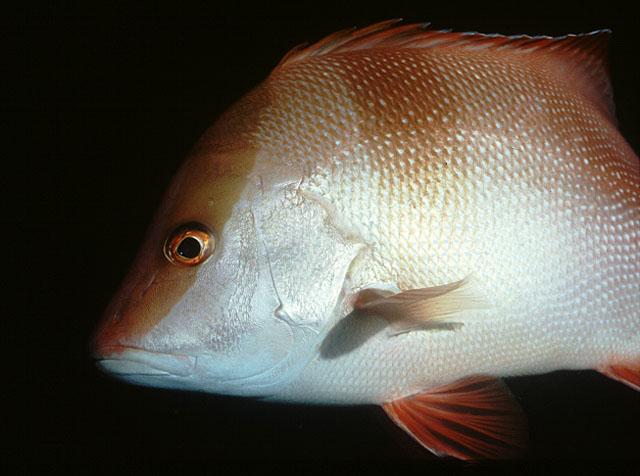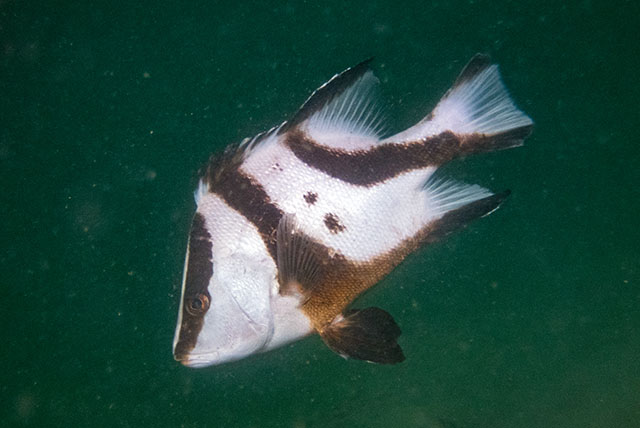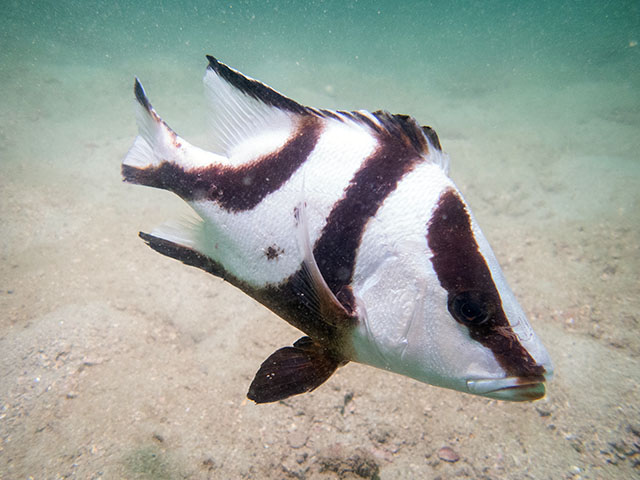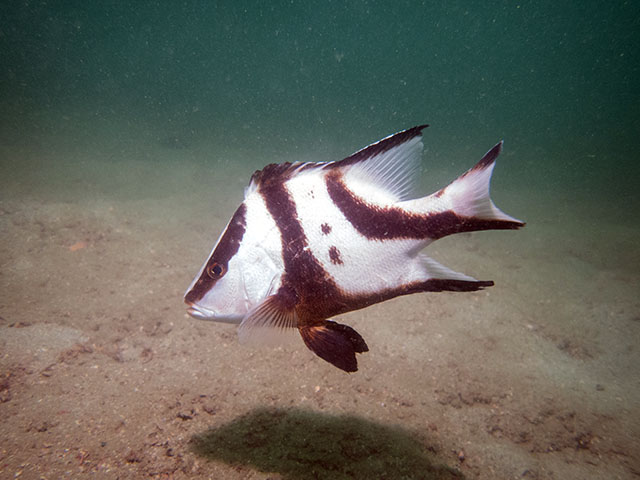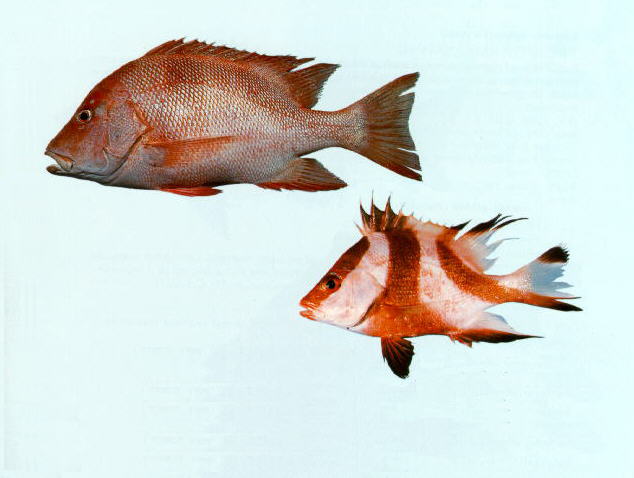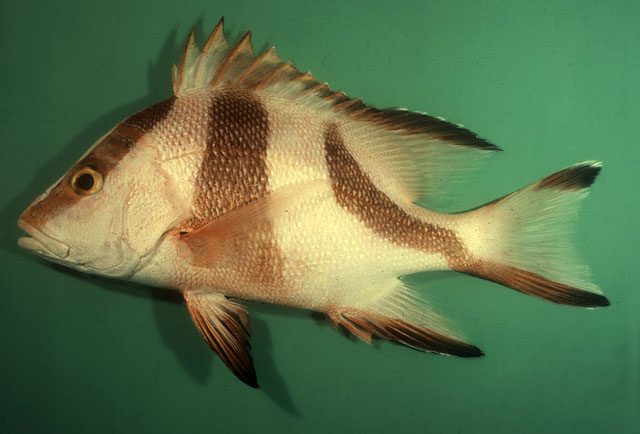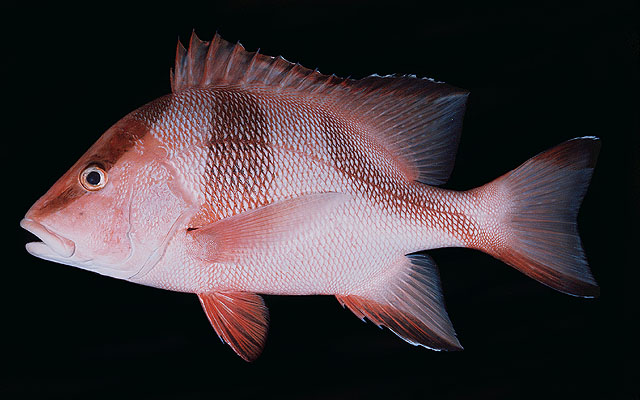Lutjanus
sebae
(Cuvier,
1816)
Emperor red snapper
View all media / Upload your photos and videos
Expand all
Classification / Names
Teleostei (teleosts) > Eupercaria/misc (Various families in series Eupercaria) >
Lutjanidae (Snappers)
> Lutjaninae
Etymology: Lutjanus: Malay, ikan lutjan, name of a fish
More on author:
Cuvier.
Environment / milieu / depth range / climate zone / distribution range
Distribution
Indo-West Pacific: southern Red Sea and East Africa to New Caledonia, north to southern Japan, south to Australia.
Maps

Lutjanus sebae / Native range
AquaMaps Data sources:
GBIF
OBIS
This map was computer-generated and has not yet been reviewed.

Lutjanus sebae / Suitable habitat
AquaMaps Data sources:
GBIF
OBIS
This map was computer-generated and has not yet been reviewed.

Lutjanus sebae / Point map
AquaMaps Data sources:
GBIF
OBIS
This map was computer-generated and has not yet been reviewed.

Lutjanus sebae / Year 2050
AquaMaps Data sources:
GBIF
OBIS
This map was computer-generated and has not yet been reviewed.
Length at first maturity / Size / Weight / Age
Short description
Dorsal spines (total): 11; Dorsal soft rays (total): 15 - 16; Anal spines: 3; Anal soft rays: 10. Dorsal profile of head steeply sloped. Preorbital bone broad. Preopercular notch and knob moderately developed. Scale rows on back rising obliquely above lateral line. Generally red or pink, darker on the back; fins are red except the pectorals which is pink. Juveniles and small adults have a dark red band from first dorsal spine through eye to tip of snout; a 2nd band from mid-dorsal fin to pelvic fin; a 3rd from base of last dorsal spine to caudal peduncle. Large adults become uniformly red (Ref. 9710). Note: (TL, cm) = 1.00 + 1.24 (SL, cm); n = 828 (Ref. 1450). Body depth 2.6-3.0 in SL (Ref. 90102).
Biology
Adults occur in the vicinity of coral or rocky reefs (Ref. 5484), often over adjacent sand flats and gravel patches (Ref. 55). Also trawled in deeper water on relatively flat bottoms. Juveniles are frequently commensal with sea urchins (Ref. 55). Juveniles less than 20 cm long are common in near shore, turbid waters (Ref. 27260), in mangrove areas (Ref. 55), or among both coastal and deeper water offshore reefs (Ref. 27260). Juveniles can also be found swimming amongst the spines of urchins in shallow coastal bays (Ref. 48635). They move to deeper waters as they grow larger (Ref. 27264), with large fish often moving into shallower water during the winter months (Ref. 27260, 27264). They form schools of similar-sized individuals or are solitary (Ref. 6390). Feed on fishes, crabs, stomatopods, other benthic crustaceans and cephalopods. Marketed fresh, dried-salted and frozen (Ref. 9987). Commercially important but in certain regions of the Indian Ocean, large individuals are known to cause ciguatera poisoning (Ref. 11888).
Life cycle and mating behavior
Emperor red snappers are broadcast spawners (Ref. 28009).
Main reference
Allen, G.R. 1985 FAO Species Catalogue. Vol. 6. Snappers of the world. An annotated and illustrated catalogue of lutjanid species known to date. FAO Fish. Synop. 125(6):208 p. Rome: FAO. (Ref. 55)
IUCN Red List Status (Ref. 125652)
Least Concern (LC); date assessed: March 05 2015
CITES (Ref. 131153)
Not Evaluated
CMS (Ref. 116361)
Not Evaluated
Threat to humans
Reports of ciguatera poisoning (Ref. 11888)
More information
- Countries
- FAO areas
- Ecosystems
- Occurrences
- Introductions
- Stocks
- Ecology
- Diet
- Food items
- Food consumption
- Ration
- Common names
- Synonyms
- Metabolism
- Predators
- Ecotoxicology
- Reproduction
- Maturity
- Spawning
- Spawning aggregation
- Fecundity
- Eggs
- Egg development
- Age/Size
- Growth
- Length-weight
- Length-length
- Length-frequencies
- Morphometrics
- Morphology
- Larvae
- Larval dynamics
- Recruitment
- Abundance
- References
- Aquaculture
- Aquaculture profile
- Strains
- Genetics
- Allele frequencies
- Heritability
- Diseases
- Processing
- Mass conversion
- Vision
- Pictures
- Stamps, Coins Misc.
- Sounds
- Ciguatera
- Speed
- Swim. type
- Gill area
- Otoliths
- Brains
Estimates based on models
Preferred temperature (Ref. 123201): 22.9 - 28.5, mean 27.1 °C (based on 1153 cells).
Phylogenetic diversity index (Ref. 82804): PD50 = 0.5 [Uniqueness, from 0.5 = low to 2.0 = high].
Bayesian length-weight: a=0.01413 (0.01050 - 0.01900), b=3.03 (2.94 - 3.12), in cm total length, based on LWR estimates for this species (Ref. 93245).
Trophic level (Ref. 69278): 4.1 ±0.4 se; Based on diet studies.
Generation time: 6.9 (5.0 - 7.8) years. Estimated as median ln(3)/K based on 12 growth studies.
Resilience (Ref. 120179): Medium, minimum population doubling time 1.4 - 4.4 years (K=0.13-0.38; tmax=35; Fec=5 million).
Fishing vulnerability (Ref. 59153): High vulnerability (59 of 100).
Price category (Ref. 80766): High; Questionable: based on ex-vessel price for species in this genus.
Nutrients (Ref. 124155): Calcium = 16.5 [7.9, 30.5] mg/100g; Iron = 0.269 [0.151, 0.543] mg/100g; Protein = 18.3 [16.6, 19.8] %; Omega3 = 0.104 [0.059, 0.177] g/100g; Selenium = 89.2 [42.1, 187.5] μg/100g; VitaminA = 91 [13, 495] μg/100g; Zinc = 0.321 [0.212, 0.502] mg/100g (wet weight);

